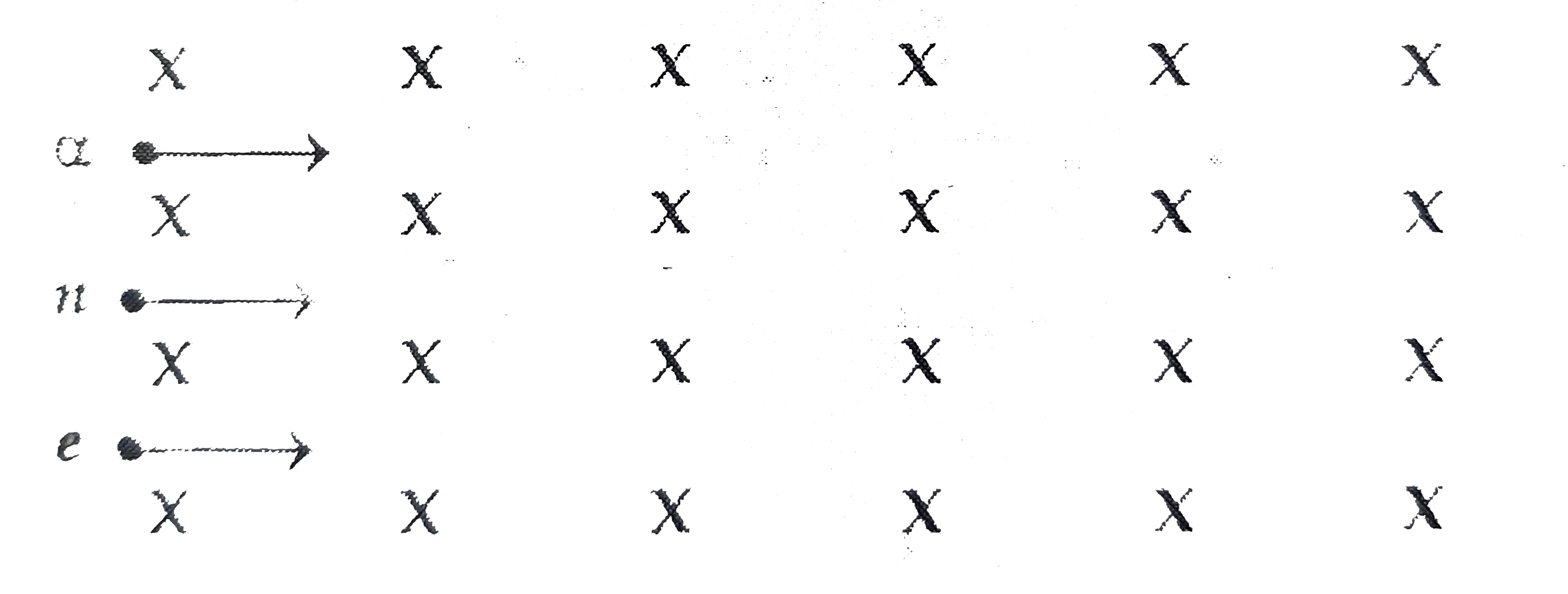Write the expression for the magnetic force acting on a, charged particle moving with velocity v in the presence of magnetic field B.
To derive the expression for the magnetic force acting on a charged particle moving with velocity v in the presence of a magnetic field B, we can follow these steps:
Step 1: Understand the Concept
The magnetic force acting on a charged particle is given by the Lorentz force law, which states that the force F on a charged particle is proportional to the charge q, the velocity v of the particle, and the magnetic field B.
Step 2: Write the Formula
The expression for the magnetic force F can be written as:
F=q(v×B)
where × denotes the cross product.
Step 3: Analyze the Components
- q is the charge of the particle.
- v is the velocity vector of the particle.
- B is the magnetic field vector.
Step 4: Magnitude of the Force
The magnitude of the magnetic force can be expressed as:
F=qvBsin(θ)
where:
- v is the magnitude of the velocity,
- B is the magnitude of the magnetic field,
- θ is the angle between the velocity vector and the magnetic field vector.
Step 5: Conclusion
Thus, the expression for the magnetic force acting on a charged particle moving with velocity v in the presence of a magnetic field B is:
F=q(v×B)
or in terms of magnitude:
F=qvBsin(θ)
---
The magnetic force acting on a charged particle is given by the Lorentz force law, which states that the force F on a charged particle is proportional to the charge q, the velocity v of the particle, and the magnetic field B.
The expression for the magnetic force F can be written as:
F=q(v×B)
where × denotes the cross product.
- q is the charge of the particle.
- v is the velocity vector of the particle.
- B is the magnetic field vector.
The magnitude of the magnetic force can be expressed as:
F=qvBsin(θ)
where:
- v is the magnitude of the velocity,
- B is the magnitude of the magnetic field,
- θ is the angle between the velocity vector and the magnetic field vector.
Thus, the expression for the magnetic force acting on a charged particle moving with velocity v in the presence of a magnetic field B is:
F=q(v×B)
or in terms of magnitude:
F=qvBsin(θ)
Topper's Solved these Questions
- CBSE EXAMINATION PAPER - 2016 BOOK - CBSE COMPLEMENTARY MATERIALCHAPTER - CBSE EXAMINATION PAPER - 2016 EXERCISE - SECTION - E
17 Videos
- CBSE EXAMINATION PAPER - 2016 BOOK - CBSE COMPLEMENTARY MATERIALCHAPTER - CBSE EXAMINATION PAPER - 2016 EXERCISE - SECTION - B
5 Videos
- CBSE BOARD EXAMNATION PAPER (2017 )BOOK - CBSE COMPLEMENTARY MATERIALCHAPTER - CBSE BOARD EXAMNATION PAPER (2017 )EXERCISE - SECTION E
12 Videos
- CBSE Examination Paper Delhi–2014BOOK - CBSE COMPLEMENTARY MATERIALCHAPTER - CBSE Examination Paper Delhi–2014EXERCISE - SET-III (Questions Uncommon to set-I and II)
9 Videos
Similar Questions
(a) Write the expression for the magnetic force acting on a k charged particle moving with velocity v in the presence of magnetic field B .
(b) A neutron an electron and an alpha particel moving with equal velocities enter a uniform magnetic field going into the plane of the paper as shown. Trace their paths in the field and justify your answer .

View SolutionWrite the expression for the magnetic force →F acting on a charged particle q moving with velocity →v in the presence of the magnetic field →B in a vector form.
Show that no work is done and no change in the magnitude of the velocity of the particle is produced by this force.
View Solution
Knowledge Check
The force on a charged particle moving with a velocity →v in a magnetic field →B is :
Aperpendicular to both →v and →BBmaximum, if ovrseov perpendicular to →BCmaximum, if ovrseov parallel to →BDzero, if ovrseov is parallel to →BThe force on a charged particle moving with a velocity →v in a magnetic field →B is :
Aperpendicular to both →v and →BBmaximum, if ovrseov perpendicular to →BCmaximum, if ovrseov parallel to →BDzero, if ovrseov is parallel to →B
Write the expression in vector form for the magnetic force →F acting on a charged particle moving with velocity →v in the presence of a magnetic field →B. What is the direction of the magnetic force ?
View SolutionWrite the expression for the magnetic force →F acting on a charged particle q moving with →υ in the presence of the magnetic field →B in a vector form. Show that no work is done and no charge in the magnitude of the velocity of the particle is produced by this force. Hence define the unit of magnetic field.
View SolutionWrite the expression for the force →F acting on a charged particle of charge q moving with a velocity →v in the presence of both electric field →E and magnetic field →B . Obtain the condition under which the particle moves underflected through the fields.
View SolutionWrite the expression for the force →F, acting on a charged particle of charge q moving with a velocity θ in the presence of both electric field →E and magnetic field →B.Obtain the condition under which the particle moves undeflected through the fields
(b) A rectangular loop of size l×b carrying a steady current I is placed in a uniform magnetic field →B.Prove that the torque →τ acting on the loop is given by →τ=→m×→B,where →m is the magnetic moment of the loop.
View SolutionWrite the expression for the force →F, acting on a charged particle of charge q moving with a velocity →v in the pressure of both electric field →E and magnetic field →B. Obtain the condition under which the particle moves undeflected through the fields.
View SolutionWhat is the direction of the force acting on a charged. Particle q moving with a velocity →v in a uniform magnetic field →B ?
View Solution
